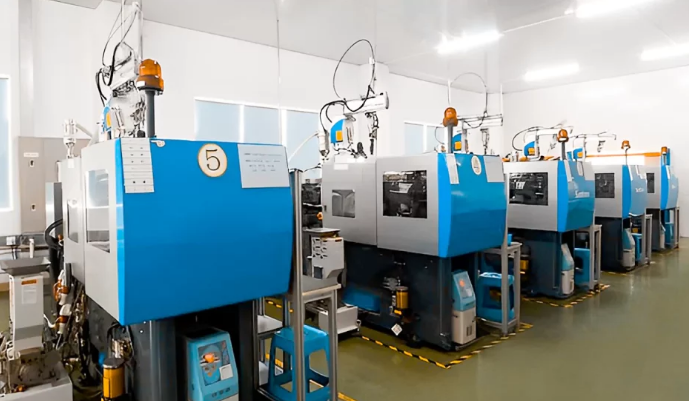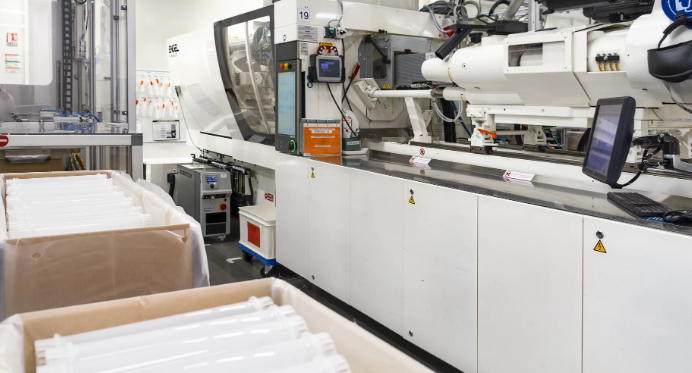Injection molding precision can achieve tolerances as tight as ±0.005 mm, varying by material and machine.
Overview of Injection Molding Precision
Defining Precision in Injection Molding
In injection molding, precision specifically refers to the exactness in the dimensions and consistency of the finished products. Notably, high-precision molding often achieves tolerances within an impressive range of ±0.005 mm, which proves essential for complex components, such as in medical devices or electronic connectors.

Key Factors Influencing Precision
Material Characteristics
Type of Material: When selecting materials, manufacturers often prefer plastics like Polycarbonate (PC) and Polyamide (PA) for high-precision tasks due to their superior flow and minimal shrinkage (about 0.6% for PC and 1-1.5% for PA).
Quality of Material: Importantly, using materials with less than 0.02% impurities typically leads to higher precision in the final product.
Machine Specifications
Machine Accuracy: Today’s advanced machines provide highly precise controls, maintaining injection pressure variability within a narrow margin of 1-2%.
Clamping Force: Machines apply a clamping force ranging from 200 to 20,000 tons, with larger forces enhancing the precision of bigger parts.
Process Parameters
Injection Speed and Pressure: Ideally, manufacturers set the injection speed between 60-100 cm³/s and maintain pressures around 150-200 MPa for most materials, balancing flow and cooling effectively.
Cooling Time and Temperature: Managing the cooling process precisely, particularly keeping the coolant within a 5-10°C range, significantly improves dimensional accuracy.
Environmental Factors
Ambient Conditions: Manufacturers must maintain the production environment within an optimal temperature range of 20-22°C and humidity levels around 45-55% to ensure consistent material properties.
Machine Maintenance: Regular and thorough maintenance helps to avoid a potential decline in precision, which could otherwise reach 5-10% over time.
By paying close attention to these details, manufacturers can achieve and maintain the high levels of precision required in the injection molding industry.
Materials and Their Impact on Precision
Types of Materials Used in Injection Molding
Injection molding employs a variety of materials, each offering unique properties and affecting the precision of the final product.
Thermoplastics like ABS (Acrylonitrile Butadiene Styrene) and Polycarbonate (PC) are popular due to their easy molding and high stability. ABS, for example, offers a balance of toughness and rigidity, with a melting temperature around 200°C, making it suitable for a wide range of applications.
Thermosetting plastics, such as Epoxy and Phenolic resins, are known for their high heat resistance and structural integrity. These materials, once set, cannot be remelted, providing high precision in final products but at increased material costs.
Material Properties and Precision Correlation
Impact of Material Characteristics on Precision
Melting Point and Flow: Materials like Nylon (melting point around 220°C) have excellent flow properties, enhancing precision in intricate molds. Conversely, materials with higher melting points require more energy, impacting production costs.
Shrinkage and Warping: Different materials exhibit varying degrees of shrinkage. For instance, Polypropylene has a shrinkage rate of approximately 1.5-2%, which can complicate achieving precise dimensions.
Economic Aspects of Material Choice
Cost Efficiency: Materials like Polyethylene are cost-effective for bulk manufacturing but may offer lower precision due to higher shrinkage rates (up to 3%).
Lifecycle and Durability: High-performance plastics like PEEK (Polyether Ether Ketone), although more expensive (costing up to 50% more than standard plastics), provide superior longevity and precision, making them a preferred choice for high-end applications.
For more detailed information on various plastics, their properties, and applications, one can refer to the comprehensive Plastics Wiki.
Machinery and Equipment Precision
Injection Molding Machines: Types and Capabilities
Injection molding machines come in various types, each suited for specific applications and offering different levels of precision.

Hydraulic Injection Molding Machines are known for their robustness and high clamping force, which can range up to 3,000 tons. These machines are cost-effective for large-scale production but may have variations in precision due to hydraulic fluid temperature fluctuations.
Electric Injection Molding Machines offer greater precision and repeatability with less energy consumption. They typically operate with a precision tolerance of ±0.01 mm, making them ideal for high-precision components. However, the cost of these machines can be 20-30% higher than hydraulic counterparts.
Hybrid Injection Molding Machines combine the best of both hydraulic and electric types, offering high clamping force and energy efficiency. They maintain precision levels similar to electric machines but at a slightly reduced cost.
Role of Machine Precision in Product Quality
Influence on Dimensional Accuracy
Clamping Force and Mold Stability: A consistent clamping force, essential for mold stability, directly impacts the dimensional accuracy of the final product. Any variation can lead to defects such as warping or flash.
Injection Pressure and Speed Control: Precise control of injection pressure and speed, crucial for complex geometries, ensures uniform filling of the mold and reduces the chances of defects.
Longevity and Maintenance Impact
Machine Lifespan: Regular maintenance can extend the life of a machine, typically ranging from 10 to 20 years, thus preserving its precision capabilities.
Wear and Tear: Over time, components like screws and barrels wear down, potentially reducing precision. Replacement or maintenance of these parts is crucial for maintaining product quality.
For a more in-depth understanding of these machines, one can refer to the Injection Molding Machine Wiki.
Molding Process and Precision Control
Process Parameters Affecting Precision
| Parameter | Description | Impact on Precision | Typical Range/Data |
|---|---|---|---|
| Injection Speed | The rate at which the molten plastic is injected into the mold. | Faster speeds can lead to uneven filling and air pockets, affecting precision. | 60-100 cm³/s |
| Injection Pressure | The force exerted by the machine to push plastic into the mold. | Higher precision is achieved with stable and consistent pressure. | 150-200 MPa |
| Mold Temperature | The temperature at which the mold is maintained during the injection process. | Optimal temperature ensures proper flow and cooling, influencing dimensional accuracy. | 20-120°C (varies by material) |
| Cooling Time | The duration for which the product is allowed to cool and solidify in the mold. | Adequate cooling is crucial for minimizing shrinkage and warping. | Depends on material and part thickness |
Techniques for Precision Control in Molding
Enhancing Accuracy and Consistency
| Technique | Application | Benefits | Considerations |
|---|---|---|---|
| Precision Mold Design | Creating molds with exact dimensions and tolerances. | Ensures high repeatability and accuracy in produced parts. | Higher initial cost but reduced waste and rework. |
| Process Optimization | Fine-tuning the injection molding parameters. | Balances speed, pressure, and cooling to achieve optimal precision. | Requires ongoing monitoring and adjustment. |
| Real-time Monitoring | Using sensors and software to monitor the molding process. | Allows for immediate adjustments and reduces defects. | Investment in advanced monitoring systems. |
| Regular Maintenance | Keeping machinery and molds in top condition. | Prevents wear and tear from affecting precision. | Scheduled downtime for maintenance is necessary. |
For further details on molding processes, Injection Molding offers a comprehensive overview.




